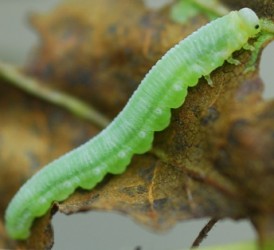
A reader (or, technically, the daughter-in-law of a reader who wrote in on her behalf) found some small, green worms in her garden. She recently moved into a new house and was doing some preliminary gardening work when she found the “tiny green worms,” to use the reader’s precise wording, and she was wondering what they might be. We’ll do our best to assist, starting with this: the small, green worms our reader found might have been small and green, but they almost certainly aren’t worms. Rather, they are probably insect larvae, or possibly caterpillars, both of which are commonly mistaken for worms, which is actually a scientifically imprecise term.
Unfortunately, the reader did not supply a picture, making any guess necessarily more speculative. Moreover, the reader didn’t exactly use the most descriptive words – “tiny” is a relative judgement in the realm of worms and insects (lots of things might plausibly be called “tiny”), and the only other physical details we were given is that the “worm” is green. We were told, however, that one of the creatures “sort of stood upwards like a cobra and was spinning,” which is noteworthy, even if we’re not particularly sure what to make of it.
If we were asked about a “green worm” in a garden that wasn’t explicitly declared tiny, we would probably suggest to this hypothetical person that he or she found some type of hornworm, which is the larval form (caterpillar form) of the moths that belong to the Sphingidae family. The most likely candidate would be a tomato hornworm or a tobacco hornworm, which are commonly confused. They look very similar (both are green caterpillars), and tomato hornworms can be found on tobacco, and tobacco hornworms can be found on tomatoes. However, both hornworms (which, again, are caterpillars, not worms) are generally several inches long, so they presumably wouldn’t be called “tiny” (evidently that adjective got us further than we thought it would).
And this leads us to guess that our reader might have found some type of sawfly larvae, which belong to the order Hymenoptera, and look like this:
Many species are fairly small, although others can reach nearly three inches in length. Moreover, several sawflies are green (like rose sawflies, which are also only about a half an inch long) and contort their bodies as if standing up, further matching the description sent in by our reader. Still further, sawflies are commonly found in gardens because they feed on a variety of vegetation, and so not surprisingly they are regarded as pests. Fortunately, however, our reader’s garden was non-functional when she wrote us, so she didn’t have any tales of destroyed vegetables. But if she ever does grow in the garden, she’ll want to keep an eye out for sawfly larvae.
Of course, though, we aren’t entirely sure if she found sawfly larvae (but that’s as good of a hypothesis as any based on the information we have received). If our reader looks into them further and perhaps matches her find against photos online, she should be able to determine exactly what is in her garden. Hopefully we’ve started her in the right direction.
All About Worms is always free, always reader-supported. Your tips via CashApp, Venmo, or Paypal are appreciated! Receipts will come from ISIPP Publishing.




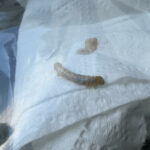
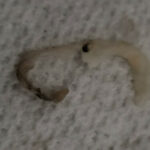

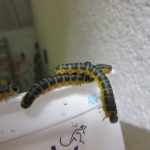
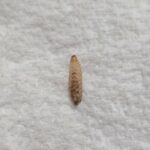
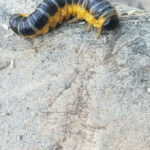
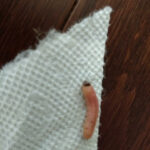

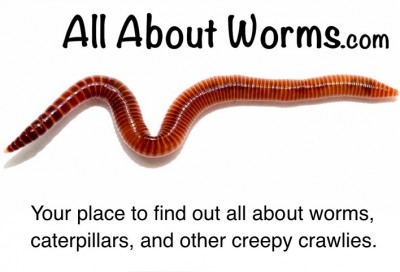

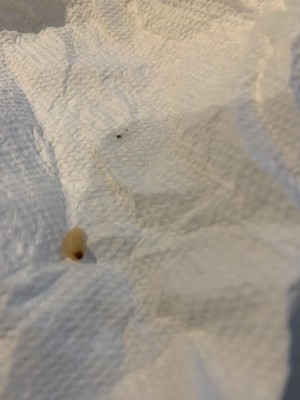


Hi,
This is in regards to the “Small White Worms . . .” article (there isn’t a “Comments” window there.
Since the worms were found in soil where sheep manure was spread, could they be a sheep parasite?